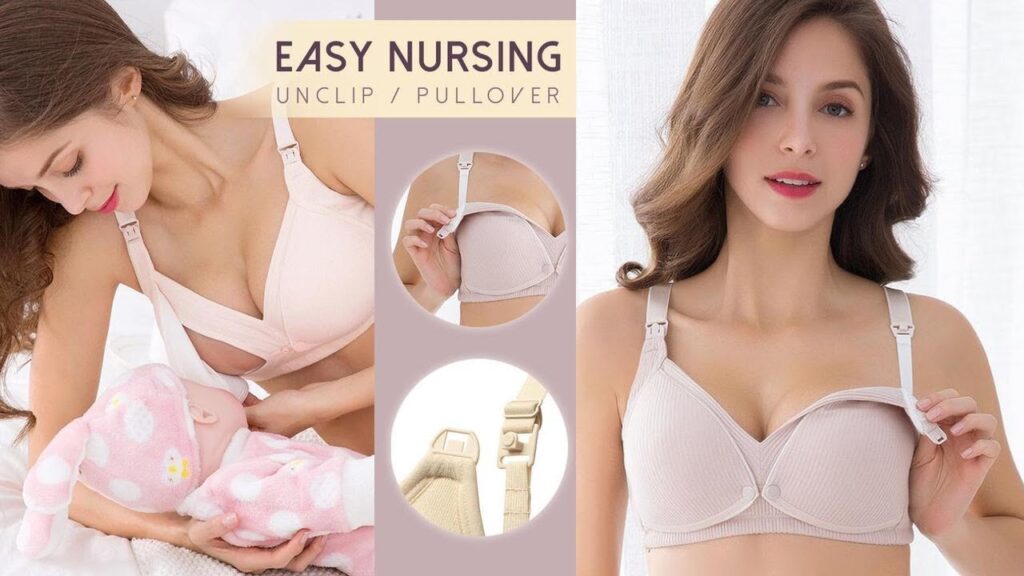The journey through pregnancy to motherhood is filled with a myriad of changes. For many women, changes in breast size and shape can be among the most noticeable and significant. As such, understanding and implementing effective post-pregnancy breast support is crucial. This article provides an in-depth exploration of the need for breast support, the changes one might experience, and the best practices to ensure comfort and health.

Understanding the Changes
Breasts undergo several alterations during and after pregnancy. Knowledge of these changes is the foundation of proper post-pregnancy breast care.
Milk Production
The primary function of the breasts after childbirth is to produce milk for the baby. This results in:
- Increased Volume: The mammary glands fill with milk, making breasts fuller.
- Heaviness: With the increased volume comes the added weight which can lead to discomfort if not supported properly.
- Temperature Sensitivity: Breasts might feel warmer due to increased blood flow.
Size and Shape Alterations
Pregnancy hormones prepare the breasts for lactation:
- Size Fluctuations: While some women notice a significant increase, others might experience moderate changes.
- Shape Evolution: Post breastfeeding, the breasts may not revert exactly to their pre-pregnancy state, leading to potential sagging or droopiness.
- Areola and Nipple Changes: They might darken and enlarge during pregnancy and might or might not return to their original state post-pregnancy.
Sensitivity and Discomfort
Breast tissue becomes more sensitive due to hormonal surges:
- Tenderness: Especially prevalent in the early breastfeeding days.
- Pain: Incorrect breastfeeding latch or infections can cause pain.
- Stretch Marks: As breasts enlarge, the skin stretches, potentially leading to stretch marks.
Importance of Post-pregnancy Breast Support
Comfort
Good support alleviates discomfort:
- Reduction in Back Pain: Larger, milk-filled breasts can strain the back if not supported.
- Prevention of Skin Irritation: Proper bras minimize chafing.
Aesthetics and Confidence
Supporting the breasts can influence how a woman feels about her body:
- Shape Maintenance: Reducing sagging and maintaining a desired shape.
- Clothing Fit: Properly supported breasts enhance how clothes fit, boosting self-esteem.
Health Considerations
- Preventing Blocked Ducts: A well-fitting bra ensures that milk ducts aren’t compressed.
- Reducing Infection Risk: Good hygiene and appropriate bra materials can reduce the risk of infections like mastitis.
How to Choose the Right Support
Types of Bras
- Nursing Bras: Designed for breastfeeding moms with features like clip-down cups.
- Sleep Bras: Soft, wireless bras offering gentle support for nighttime.
- Sports Bras: Essential for post-pregnancy workouts, providing firm support.
- Everyday Bras: For daily wear, ensuring comfort and style.
Material and Fit
- Breathability: Fabrics like cotton allow the skin to breathe, reducing sweat and potential for infections.
- Flexibility: Spandex or elastane provides stretch, adapting to size fluctuations.
- No Underwires: Especially important during early breastfeeding days.
Sizing
Breast size can change post-pregnancy. Regular fitting sessions can help:
- Professional Fittings: Offer insights into the best brands and styles.
- Adjustability: Look for bras with multiple hooks and adjustable straps.
Tips for Maintaining Breast Health Post-pregnancy
Hygiene Practices
- Clean Bras: Change bras daily or if they become damp.
- Avoid Tight Bras: Reduces risk of blocked ducts and skin irritations.
Self-exams and Doctor Check-ups
- Monthly Self-Exams: Familiarize with the normal state of your breasts.
- Annual Check-ups: Seek professional advice if any anomalies are noticed.
Proper Latching Techniques
For breastfeeding mothers, a correct latch ensures milk flows easily and reduces chances of soreness.
Stay Hydrated and Eat Right
A balanced diet supports milk production and overall breast health.
Embracing the Changes
Mental Well-being
- Acceptance: Recognize that changes are natural.
- Seek Support: Sharing feelings and concerns with partners, friends, or support groups can be therapeutic.
Gentle Care
- Moisturize: To reduce itchiness and manage stretch marks.
- Massage: Stimulates blood flow and can help in detecting anomalies.
Conclusion
Post-pregnancy breast support is a blend of understanding, proactive care, and self-love. Proper support, regular check-ups, and embracing the changes ensure that post-pregnancy breast care is not just about physical well-being, but also about mental and emotional health.











